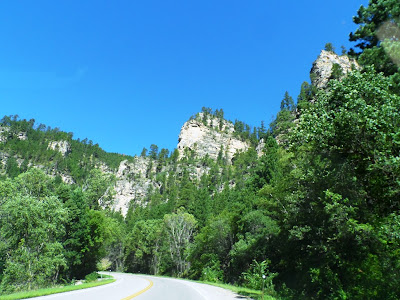The South Dakota was 660' long with 9 huge 16" guns. This ship could travel at some 30 mph with her 130,000 hp engines. The South Dakota was heavily involved in many of the largest battles in WWII and was claimed to have been sunk by the Japanese at least twice. This lead to the battleship being called Battleship X so as not to give away the fact that the South Dakota had survived the battle intact.
The South Dakota was also involved in one of the last battleship to battleship surface conflict in the Naval Battle of Guadalcanal where the South Dakota demolished several Japanese ships using guns like this one that fires a 16" shell that weighs over 2,600 pounds! Imagine that heading your way!
Of course, the gun barrels had to be cleaned as this sailor shows. This would be a very tight fit for most folks today and Rick was very happy he was not asked to clean this out!
Rick also learned that the Battleship South Dakota was not the first ship to carry the state's name. Indeed, this armored cruiser was named South Dakota was commissioned in 1908 and took part in WWI.
There were many things to look at and learn. For example, the large Japanese battle flag seen above was surrendered to the South Dakota from the Japanese battleship Nagato at the conclusion of WWII. Interestingly, the Nagato was the only Japanese battleship that was still floating at the end of the war.
There is also this remarkable model of the South Dakota. This very large model is beautifully detailed and gives a great view of the entire ship. The Memorial is a great place to visit and should be a must stop if you are anywhere near Sioux Falls, SD.




















































